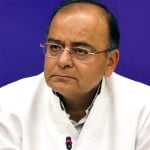
World trade has remained subdued this year. Not surprisingly, shipping indices across the board have performed miserably.
The Shanghai (Export) Containerized Freight Index (SCFI), which reflects spot rates for container transport from Shanghai to the rest of the world, has declined as much as 47% so far this year.
The China Containerized Freight Index (CCFI), which is considered a broader measure as it tracks spot and contractual rates from China to the rest of the world has declined 29% this year.
Trade is growing slower than world gross domestic product growth (GDP), according to Dharmakirti Joshi, chief economist, Crisil Ltd, whereas the scenario was opposite in the pre-Lehman era. For instance, in 2004-08, trade was growing nearly two times faster than world GDP growth, while in 2015, it is growing slightly slower than world GDP growth or almost at a similar rate, Joshi said.
To be sure, another key reason for the weak performance of shipping indices, including the popular Baltic Dry Index, which recently hit a 30-year low, is the overcapacity of vessels in the global market. The Baltic Dirty Tanker Index (freight rates index for shipping crude oil) has increased 1.6% while the Baltic Clean Tanker Index (freight rates index for shipping refined products) has declined 32%.

The outlook for the coming year may not change much. Sure, some improvement in trade is expected considering US and Europe are showing signs of improving demand. However, the slowdown in China does not offer much comfort. In fact, as pointed out in this column last week, an index of global exports volumes from CPB Netherlands Bureau for Economic Policy Analysis mirrors the broader trend of a recovery in advanced economies while emerging markets continue to struggle when compared with a year-on-year basis for September.
What’s in store for India? According to Joshi, India’s exports will remain subdued. Exports to Europe and the US will do better than trade with Asia, as Asia continues to slow, led by China. “However, if the domestic economy accelerates, there will be a need for more imports, putting upward pressure on the trade deficit,” said Joshi. In any case, a muted global trade environment means domestic consumption must accelerate if India has to sustain its current growth rates.




